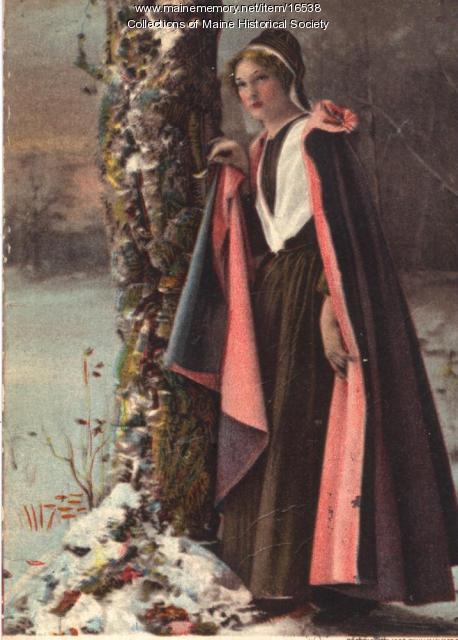Keywords: Woman
Item 23524
Woman working in Pepperell Mills, Biddeford, 1910
Contributed by: McArthur Public Library Date: 1910 Location: Biddeford Media: Photographic print
Item 100826
Woman's Relief Corps ballot box, Pittsfield, ca. 1884
Contributed by: Pittsfield Historical Society Date: circa 1884 Location: Pittsfield Media: Wood, marble
Item 36666
67 Center Street, Portland, 1924
Owner in 1924: Cumberland Candy Company Use: Store
Item 52896
148-150 Free Street, Portland, 1924
Owner in 1924: Maine Woman's Christian Temperance Union Use: Rooming House
Item 150257
Development Associates Trust building, Bangor, 1967-1979
Contributed by: Maine Historical Society Date: 1967–1979 Location: Bangor Client: Development Associates Trust Architect: Eaton W. Tarbell
Item 151601
Hancock Point Chapel, Hancock, 1898
Contributed by: Maine Historical Society Date: 1898 Location: Hancock Client: Hancock Point Chapel Society Architect: John Calvin Stevens
Exhibit
While numerous Mainers worked for and against woman suffrage in the state in the late nineteenth and early twentieth centuries, some also worked on the national level, seeking a federal amendment to allow women the right to vote
Exhibit
Margaret Chase Smith: A Historic Candidacy
When she announced her candidacy for President in January 1964, three-term Republican Senator Margaret Chase Smith became the first woman to seek the nomination of one of the two major political parties.
Site Page
Surry by the Bay - Phebe Fowler: A Woman of Property
"She had become a woman of property in an era when it was unusual for a married woman to own land in her own name. Olin died in 1922."
Site Page
"Located at 4 Academy Street in Farmington. The woman in the photograph is Lydia Abbott Titcomb. View additional information about this item on the…"
Story
Being a woman Union member was a challenge in the paper mill
by Cindy Bennett
I worked in the paper mills and for the Union during the 1987 strike.
Story
I work as a Journeyman Mechanic, or Millwright at Catalyst
by Linda Deane
Working on a paper machine and as a Millwright can be challenging as a woman and a Union Rep.
Lesson Plan
Longfellow Studies: The Acadian Diaspora - Reading "Evangeline" as a Feminist and Metaphoric Text
Grade Level: 6-8, 9-12
Content Area: English Language Arts, Social Studies
Evangeline, Longfellow's heroine, has long been read as a search for Evangeline's long-lost love, Gabrielle--separated by the British in 1755 at the time of the Grand Derangement, the Acadian Diaspora. The couple comes to find each other late in life and the story ends. Or does it?
Why does Longfellow choose to tell the story of this cultural group with a woman as the protagonist who is a member of a minority culture the Acadians? Does this say something about Longfellow's ability for understanding the misfortunes of others?
Who is Evangeline searching for? Is it Gabriel, or her long-lost land of Acadia? Does the couple represent that which is lost to them, the land of their birth and rebirth? These are some of the thoughts and ideas which permeate Longfellow's text, Evangeline, beyond the tale of two lovers lost to one another. As the documentary, Evangeline's Quest (see below) states: "The Acadians, the only people to celebrate their defeat." They, as a cultural group, are found in the poem and their story is told.


















